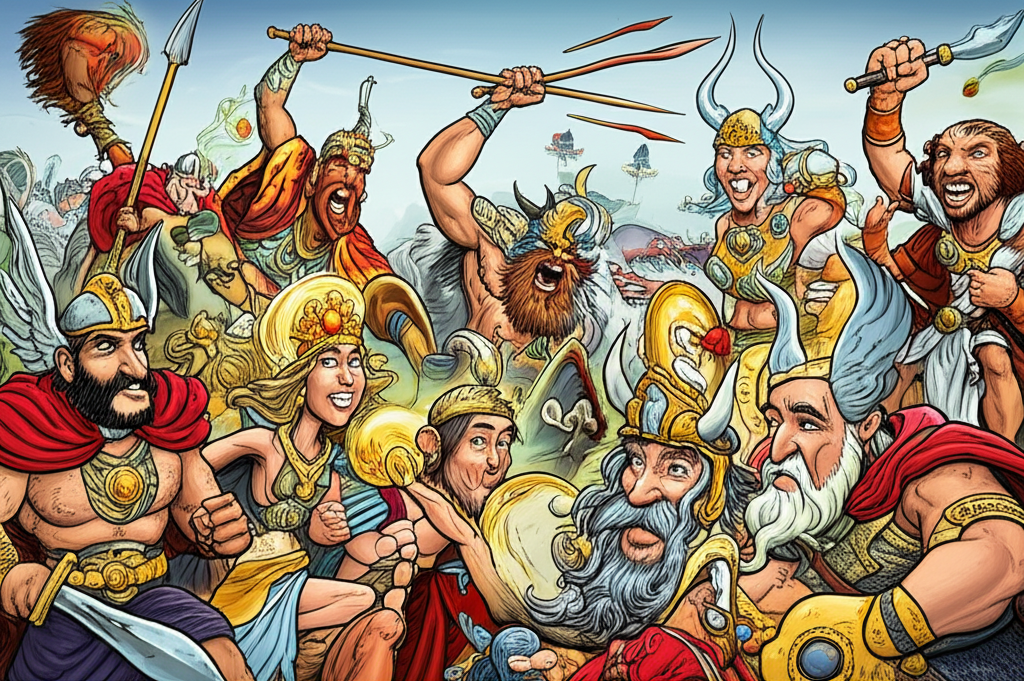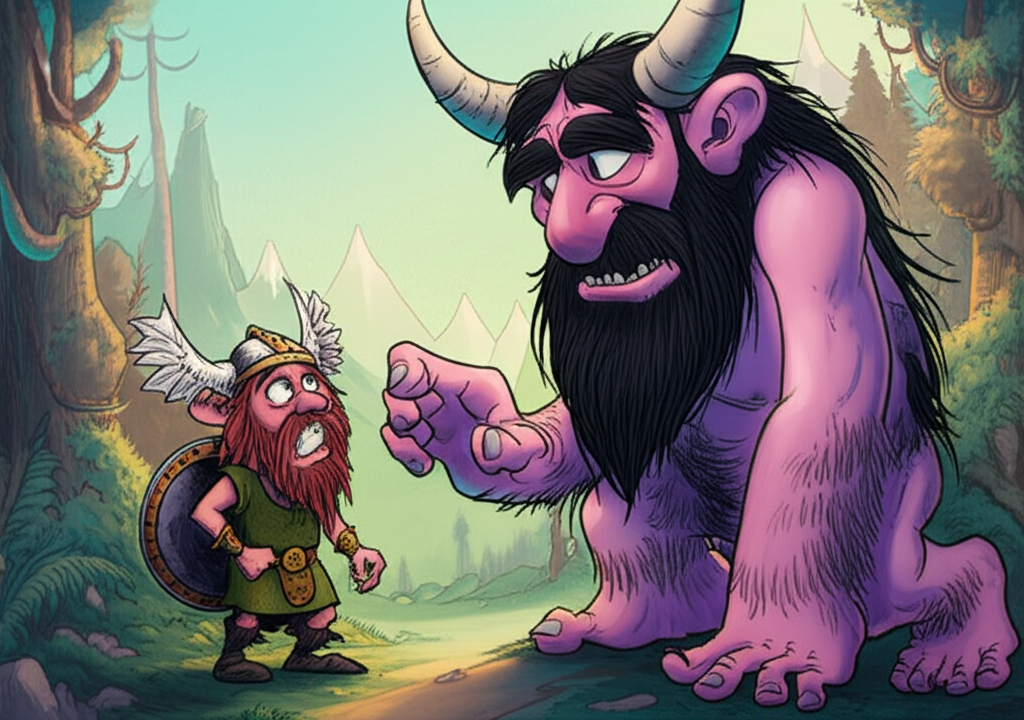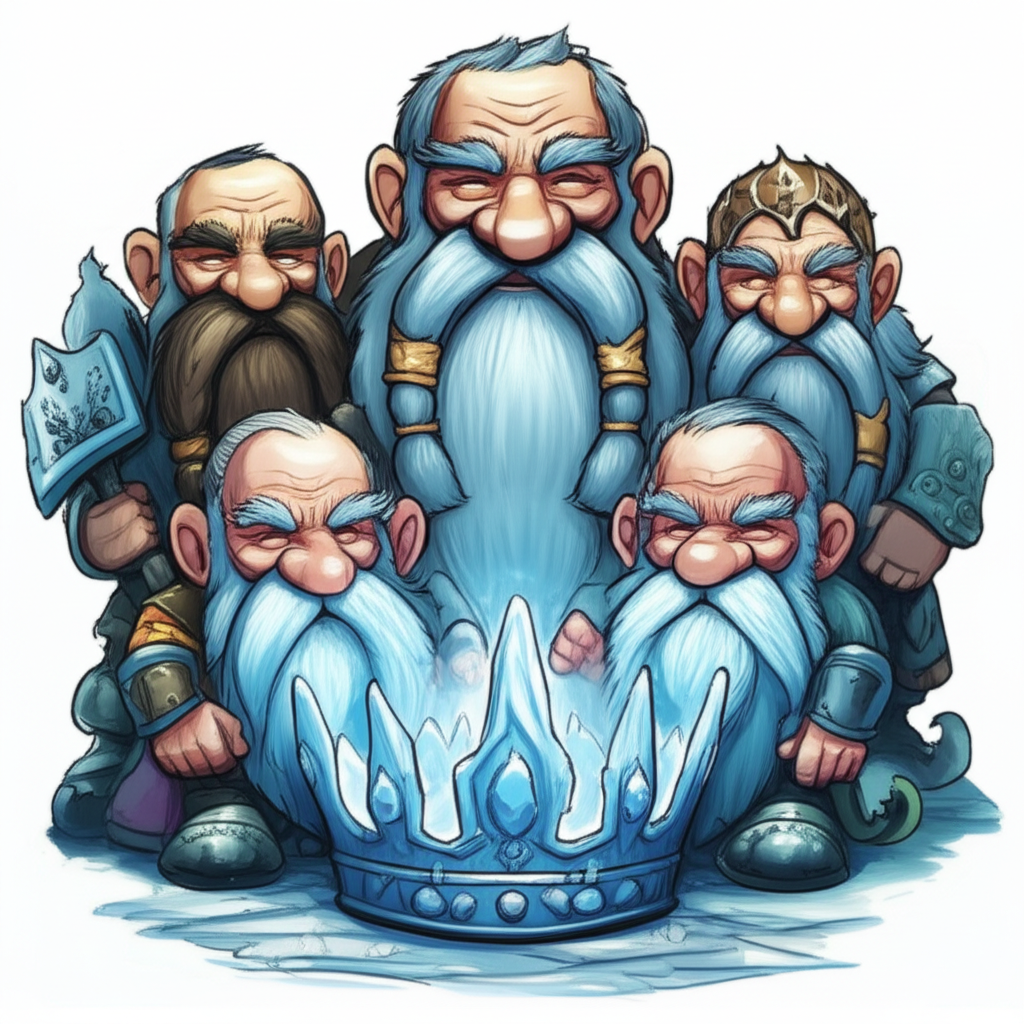
The mists of the North, a land sculpted by ice and fire, have long cradled a rich tapestry of myths and legends. From these windswept shores and deep, brooding forests emerges the story of the Æsir-Vanir War, a conflict not of flesh and blood, but of divine beings whose tales were woven into the very fabric of ancient Norse society. This is not a chronicle of historical events, but a traditional narrative, a powerful expression of how our ancestors sought to understand the world around them, their fears, their aspirations, and the unseen forces they believed shaped their destinies.
The era in which these stories flourished was one of profound connection to the natural world. For the early Norse peoples, life was a constant negotiation with the elements. Harsh winters demanded resilience, fertile summers brought bounty, and the unpredictable fury of storms and volcanic activity were constant reminders of powers beyond human control. Their worldview was one of intricate interconnectedness, where the divine was not a distant observer, but an active participant in the cycles of life, death, and rebirth. The cosmos was imagined as a grand structure, Yggdrasil, the World Tree, linking the realms of gods, giants, humans, and the underworld. Within this complex cosmology, the Æsir and the Vanir represented distinct but essential aspects of existence.
The Æsir, often associated with power, war, and dominion, were the gods who resided in Asgard, a celestial citadel. Figures like Odin, the All-Father, embodying wisdom and magic, and Thor, the thunderous protector, represented the more forceful and outward-facing aspects of divine authority. Their attributes were often symbolic of strength, order, and the will to conquer.
The Vanir, on the other hand, hailed from Vanaheim, a realm often depicted as lush and fertile, associated with prosperity, fertility, magic, and peace. Freya, the goddess of love, beauty, and sorcery, and her brother Freyr, the god of peace, rain, and sunshine, were prominent among them. Their symbolic attributes were tied to growth, abundance, and the subtler, more nurturing forces of the world.
The narrative of the Æsir-Vanir War, as told through the echoes of ancient sagas, begins not with an immediate eruption of violence, but with a simmering tension, a clash of ideologies and perceived slights. The exact catalyst is often shrouded in the mists of time, but common threads speak of the Æsir’s arrogance and their desire for control, perhaps clashing with the Vanir’s emphasis on magic and their unique understanding of the world. It is whispered that the Æsir, in their pursuit of dominance, may have sought to suppress or exploit the Vanir’s potent magic, a force they did not fully comprehend.
The war, when it finally broke out, was a cataclysmic event, a clash of divine might that shook the very foundations of the cosmos. It was a conflict characterized by devastating magical assaults, devastating raids, and the exchange of formidable warriors. Neither side possessed a decisive advantage, leading to a prolonged and brutal struggle. The gods wielded their powers with terrifying effect. Thor’s hammer, Mjolnir, unleashed thunderous blows, while Odin’s potent magic weaved illusions and struck with unseen force. The Vanir retaliated with their own potent enchantments, drawing upon the very essence of fertility and nature to unleash their fury. Fields withered under their wrath, and the very earth groaned under the strain of their divine conflict.
The war, however, was ultimately unsustainable. The sheer destruction and the realization that neither side could truly triumph led to a weary truce. The resolution was not one of outright victory, but of an arduous and intricate peace negotiation. To seal this accord, a profound exchange of hostages took place. Prominent figures from both pantheons were sent to live among the other, a testament to the newfound, albeit fragile, understanding. Figures like Mimir, a wise counselor, and Hoenir, known for his indecision, were sent to Vanaheim, while the prominent Vanir gods Freyr and Freya, along with their father Njord, were welcomed into Asgard. This exchange was not merely a political maneuver; it symbolized a merging of powers and perspectives, a recognition that the strength of the divine realm lay in its diversity. The peace, though hard-won, brought a new era, one where the wisdom of the Æsir and the magic of the Vanir were, at least in part, intertwined.
To the ancient Norse, this war and its resolution likely represented a multitude of concepts. The conflict itself could have symbolized the inherent tensions between different aspects of existence – the order and power of governance versus the unpredictable forces of nature and magic. It might have spoken to the primal fear of chaos and the need for balance. The exchange of hostages and the subsequent peace could have represented the ideal of societal harmony, the necessity of understanding and integrating opposing forces for the greater good. Freya and Freyr’s integration into Asgard, for instance, might have symbolized the divine recognition of the importance of fertility, prosperity, and magic, even for a war-centric society.
In the modern world, the Æsir-Vanir War continues to resonate, albeit in different forms. It is a fertile ground for inspiration in literature, film, and video games, where the dramatic clash of divine beings and the intricate Norse pantheon are explored and reimagined. These interpretations, while drawing on the ancient narratives, often adapt them to explore themes of power struggles, cultural clashes, and the search for balance in fantastical settings. In academic circles, the myth is studied as a valuable window into the cultural anxieties, societal structures, and spiritual beliefs of the ancient Norse peoples.
It is crucial to reiterate that this narrative, like all ancient myths, is a product of human imagination and cultural storytelling. It offers a fascinating glimpse into the minds of our ancestors, their attempts to explain the world and their place within it. As Muslims, we recognize that the true Creator and Sustainer of all existence is Allah (SWT), the One God. These ancient tales, while rich in cultural heritage and imaginative power, do not diminish this fundamental truth. Instead, they serve as a reminder of the enduring human drive to create narratives, to explore the unknown, and to find meaning in the stories we tell, passing down echoes of wisdom and wonder through generations. The Æsir-Vanir War, a tale born from the frost and fire of the North, remains a testament to the enduring power of storytelling and the vibrant tapestry of human cultural heritage.





